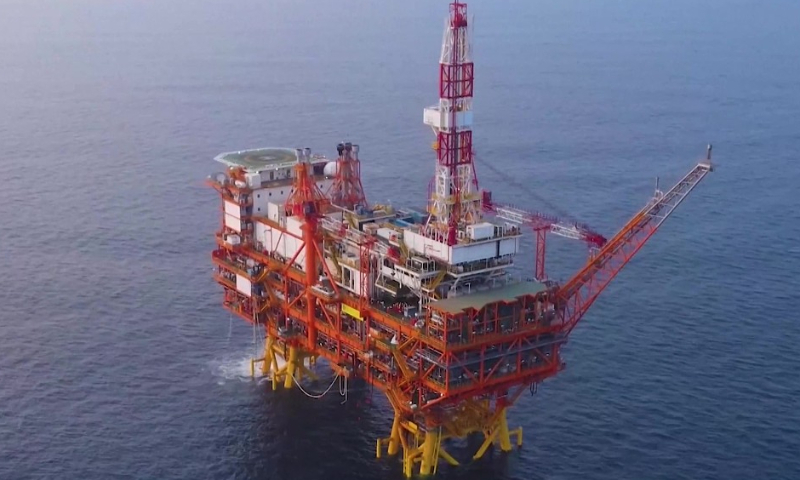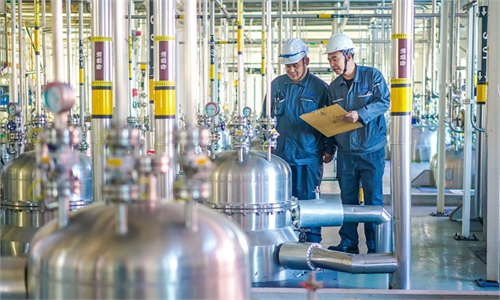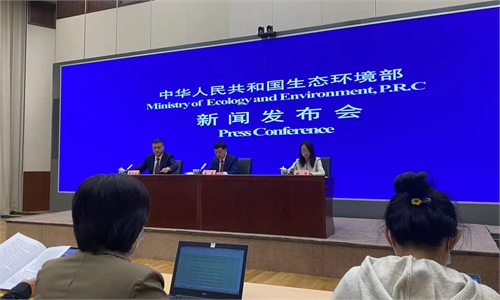
The Enping 15-1 platform of the China National Offshore Oil Corporation (CNOOC) Photo: VCG
China National Offshore Oil Corporation (CNOOC) started drilling on Sunday for its carbon dioxide (CO2) injection well at the Enping 15-1 platform. It is China's first offshore CO2 injection well, which the group said would be able to store about 300,000 tons of CO2 per year, equivalent to planting nearly 14 million trees or turning off about 1 million vehicles, according to news portal jiemian.com.
According to media reports, the drilling operation will be completed by the middle of April. The well will be used to inject and seal up CO2 generated during oil and gas production.
The device has a module weight of about 750 tons, and its core equipment includes CO2 compressor skids, molecular sieves and coolers, the Xinhua News Agency reported on Monday.
Located in the Pearl River Mouth Basin in the South China Sea, the Enping 15-1 platform, Asia's largest offshore oil production platform, was put into operation in December last year, according to Xinhua.
The Enping 15-1 Oilfield produces a lot of CO2. CNOOC decided to store the CO2 in a "dome" geological structure about 3 kilometers from the platform after carrying out research on key technologies for geological reservoirs, drilling and completion, as well as engineering integration suitable for offshore CO2 storage.
"The geological structure is like an upside-down 'giant bowl,' with strong natural sealing properties. This can seal up CO2 steadily for a long time," said Deng Chenghui with the Enping 15-1 Oilfield.
According to CNOOC, the platform is expected to store 300,000 tons of CO2 per year at its peak, with a cumulative storage of 1.5 million tons based on the storage capacity of the "dome," Xinhua reported.
It is an offshore CO2 injection well independently designed and implemented by China, said Guo Yongbin, deputy general manager and chief engineer of the CNOOC Shenzhen branch, indicating that CNOOC has formed a complete drilling and completion technology and equipment system for offshore CO2 injection, storage, and monitoring, filling the gap in China's offshore CO2 storage technology.
According to the latest survey by China's Ministry of Natural Resources, the offshore areas of China have the potential to store up to 2.58 trillion tons of CO2.
Until now, most of China's carbon capture, utilization and storage (CCUS) projects have been on the land.
According to media reports, nearly 40 CCUS projects had been put into use or were under construction in China by the end of 2022. These projects are able to capture about 3 million tons of CO2 per year.



